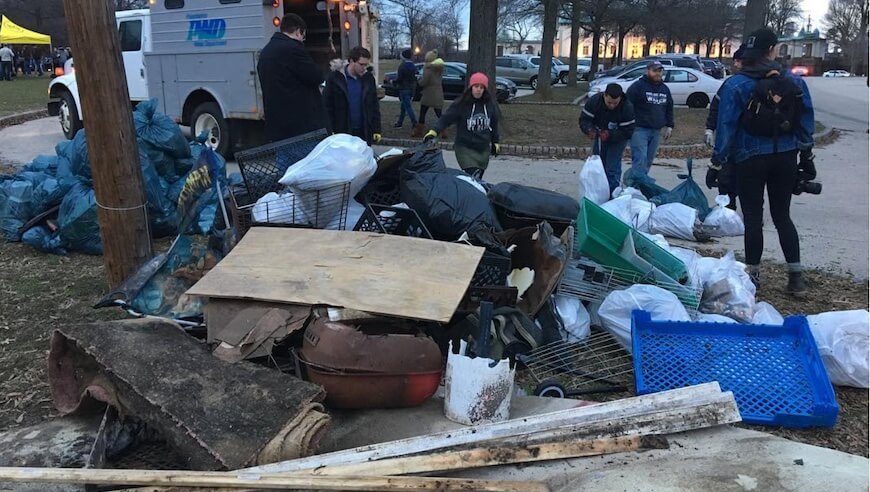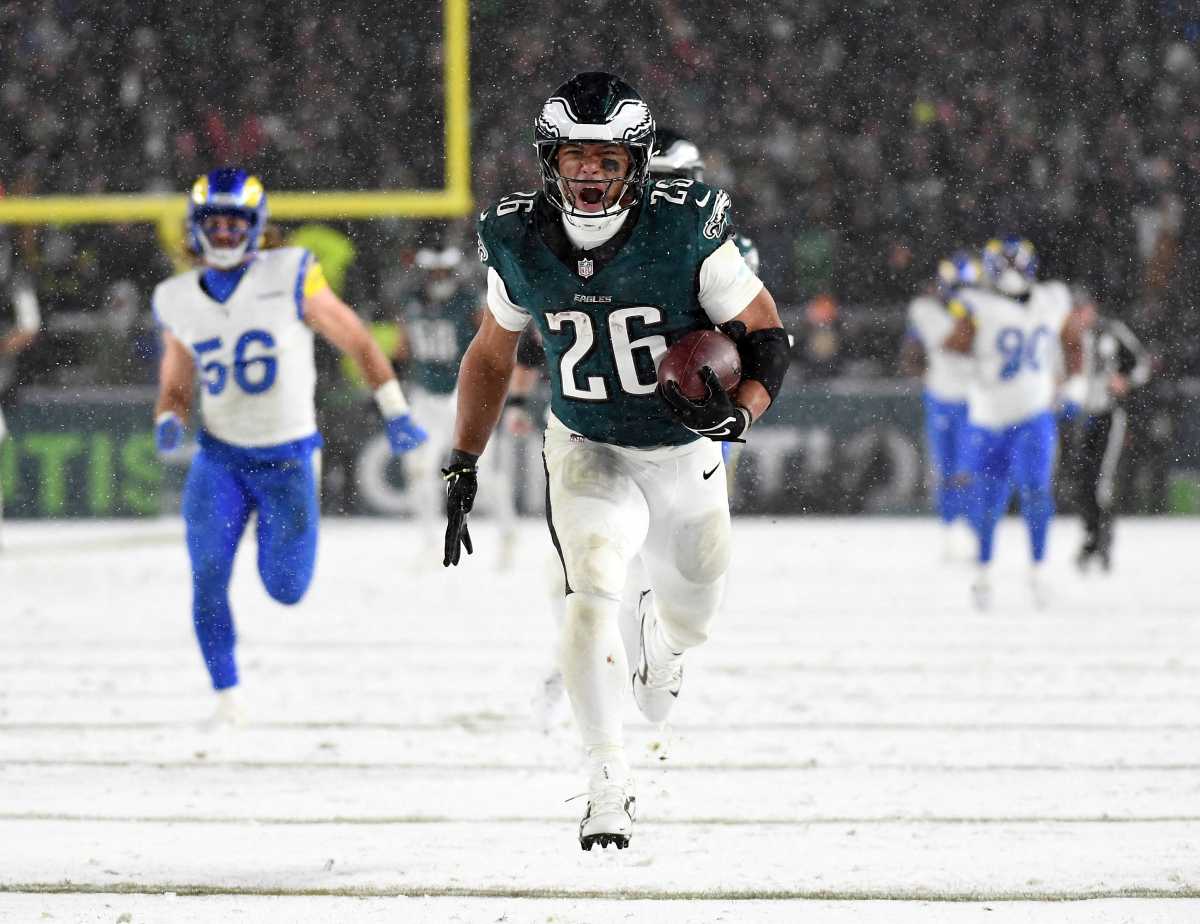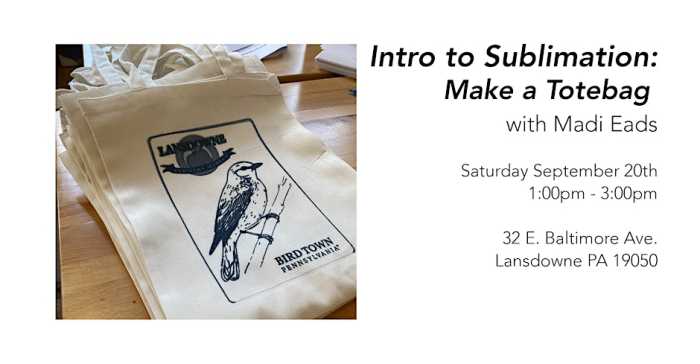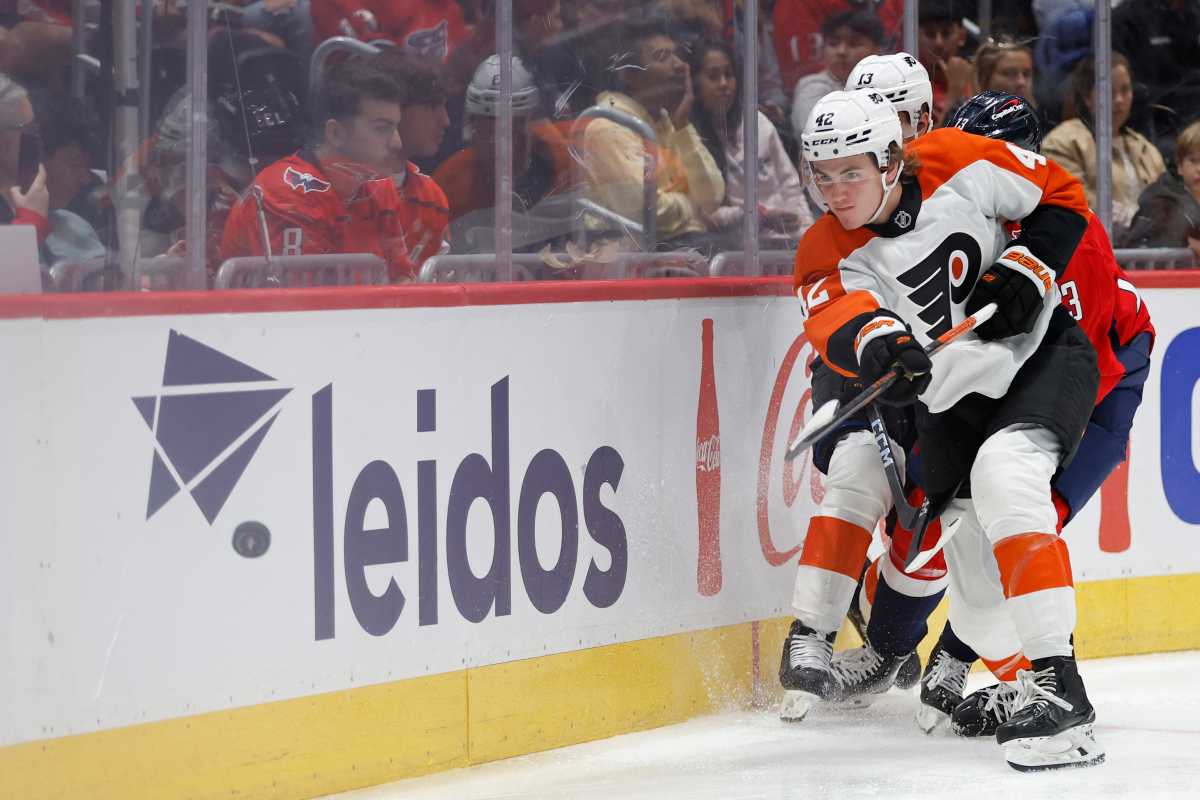The Schuylkill River has more than its fair share of trash. Over its 135-mile course from near Pottsville and through Reading to Philadelphia, the problem is not people throwing waste into the Schuylkill – but litter from the populated areas along the river, which flows into the river due to precipitation and groundwater.
How bad is the problem? Well, during just four days of cleaning by Philadelphia Water Department officials and volunteers this autumn at one small spot along the river was taken over by illegal dumpers, a total of nearly 245 tons of waste was pulled out of the river – a quantity the Water Department described as “eye-popping.”
“This was a pretty big one,” said Maria Horowitz, the environmental engineer and watershed field services manager at the Water Department who organized the cleanup. “This is the one we found that’s closest to a waterway.”
The discovered illegal short-dumping site was on a grassy area on he western side of the Schuylkill River – just northwest of Falls Bridge and West River Drive. Dumpers, apparently mostly contractors with zero regard for the laws or the fact that they were contaminating the city’s watershed, had found the mostly unused site and started tossing massive loads of tires and construction debris there.
“It was slightly a no-man’s land,” Horowitz said. She said the trash pile began 20 feet from the river, but as it got larger, debris was starting to fall into the water, not far from two intake valves where Philadelphians’ drinking water is piped in before going to treatment plants.
“As far as our drinking water quality, I don’t think it affected that” Horowitz said, but it’s not something me, as a resident of Philadelphia, wants to be close to our water intake.”
Horowitz and Water Department staff worked with staff from Parks and Recreation, the Streets Department, and volunteers from United By Blue, a Philly-based clothing and accessories retailer that pledges to remove one pound of waste from waterways for each product sold (so far, their website claims to have removed 1,501,236 pounds of waste).
Over the course of four days at this site, the team took out enough material to fill more than 400 10-yard dumpsters – or roughly equal to 32,700 households each dumping a 15-pound bag of garbage straight into the river, the Water Department said in a blog post. Over the first three days in late September, 227 tons of waste were removed. On Dec. 1, they reconvened and took out another 17.2 tons.
While some of the waste was just trash, some can be reused. Recyclables like plastic bottles were removed, while fill and gravel recovered may be reused by the Streets Department for projects like street repair, and the 488 tires removed are set to be recycled by Bridgestone Tires. The city has also placed new access gates and new “No Dumping” signs in the area, which is being looked at for future re-activation and re-use.
“There’s definitely a right and a wrong way of disposing of trash,” Horowitz said. “Our job now is doing the best we can to be sure it stays clean, and let people know we’re coming back here – it’s not just a one-time cleanup.”
‘Waters of uncommon purity’
The Schuylkill River, the scenic waterway that shapes Philadelphia, has undergone tremendous changes in the past century and a half.
Severely polluted in early 20th century by unchecked upstream industry, by the 1940s it was so filthy that barely a fish was found in its waters. But the government undertook a massive cleanup from 1947-51 and instituted new environmental regulations, changing the river’s fortunes dramatically. In past decades it has become an environmental success story, with fish and plant-life gradually regenerating. While it has not yet reached its pre-colonial level of “waters of uncommon purity,” it remains a clear example of how a waterway can heal and regenerate itself when pollution is curbed.
And the work continues to keep the Schuylkill clean. From July 2017 to June 2018, the Water Department estimated their Waterways Restoration Team removed a total of 3.2 million pounds of trash and debris from local creeks, rivers and their banks.
In 2018 alone, Water Department and United Blue worked on 12 cleanups – one of which was the above Falls Bridge clean-up – and removed a total of 422,324 pounds, they said.
Don’t dump your trash
To report illegal dumping sites, call 311.
If you have trash and don’t know where to take it, do some research. Recyclers around Philadelphia accept used tires, including Bridgestone, some Pepe Boys locations, and Sanitation Convenience Centers, where citizens can also bring large quantities of trash.
Philadelphia Community Corps is a job-training program for local youth that also accepts used construction materials, and can donors with provide tax-deductible receipts of “charitable donations.”
For a full list of Philly’s Sanitation Convenience Centers, see below.
Port Richmond
3901 Delaware Ave. 215-685-1358
Strawberry Mansion
2601 W. Glenwood Ave. 215-685-3955
Southwest Philadelphia
3033 S. 63rd St., near Passyunk Ave. 215-685-4290
Northwest Philadelphia
300 block Domino Lane, near Umbria St. 215-685-2502
Northeast Philadelphia
State Rd. & Ashburner St. 215-685-8072
























